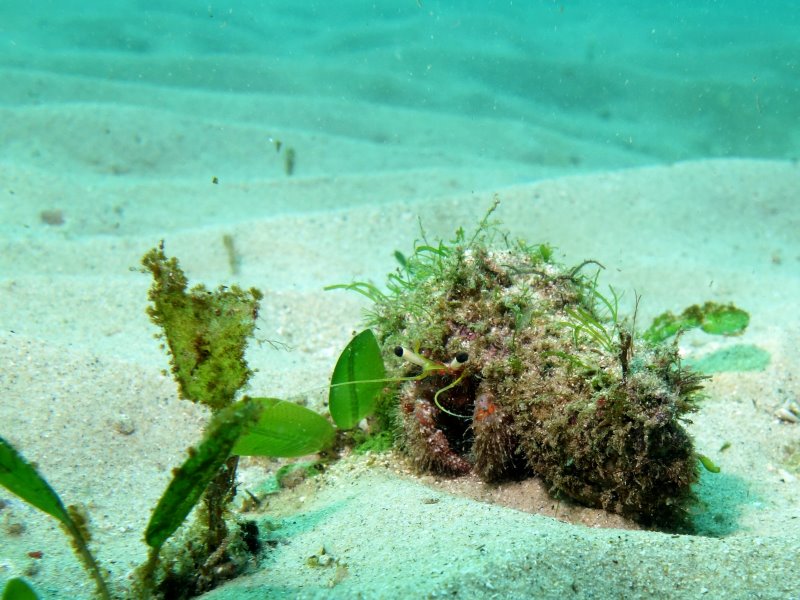
Seagrass
Seagrasses are flowering plants that grow underwater in sediment. Their roots and rhizomes help stabilise the seabed. They are not common on the NSW open coast due to strong waves. However, they thrive in Cabbage Tree Bay Aquatic Reserve, sheltered by Shelly Headland.
Small beds are found near the southern reef edge and in the middle of the bay to depths of 5-6 m.
Two types of seagrass, paddle weed (Halophila australis) and eel grass (Zostera), naturally come and go from year to year.
Marine life
Seagrasses provide vital habitat for various plants and animals.
Large numbers of fish feed here, such as tarwhine, yellowfin bream, luderick, leatherjackets, trevally, and stingrays.
Occasionally, green and hawksbill turtles can be seen grazing on seagrass within the aquatic reserve.

Swimming anemone perching on Halophila seagrass. (Photo: John Turnbull)





